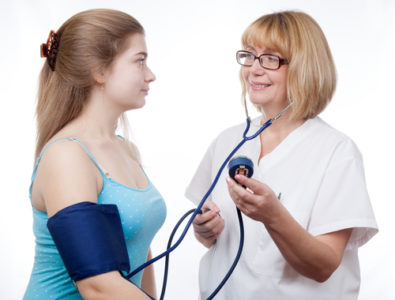
6 Simple Ways to Prevent Sports Injuries in Children
Categories: Child Orthopedics / Exercises / Pain Management / Sports Medicine
Autumn is here, which means we no longer have to worry about common summertime injuries. However, children everywhere are jumping back into the thick of strenuous team workouts, practices and games. Obviously, this is fantastic for their health, athletic and fitness goals.
But excessive physical activity can inevitably lead to injuries. That being said – it doesn’t have to. In this post, we’ll discuss some of the initiatives you can take as a parent, coach, or school medical professional to limit sports injuries from an orthopedic perspective.
Chronic Injuries Are the Most Common
If you’ve ever had a nightmare about a student suffering a sports injury, chances are it involved a traumatic accident. Getting tackled, pushed to the ground, or tripping over something is a real hazard. However, repetitive injuries also pose a significant threat.
These orthopedic injuries develop through overusing a certain part of the body. And, because young people are still growing at fast rates, their bodies are especially vulnerable to injuries. Natural pain management remedies can generally fix these issues. But it’s better to prevent them altogether.
1. Stretch Often and Strategically
In the school athletics world, two days of physical activity are rarely the same. Your student should be stretching with the drills for the day in mind, rather than practicing generic stretches.
Tendonitis is the most common injury that results from from overuse. This injury comes from the inflammation of the tissue connecting the muscle to the bone. Also, stretching properly can go a long way towards preventing this and similar injuries. It improves blood flow, raises the body temperature, and improves the body’s range of motion. A Long Island orthopedics specialist can help you to develop a stretching routine ideal for your individual habits.
Engaging in the proper stretches will prepare the athletes’ muscles and bodies for their upcoming activities. Also, with the right preparation, they’ll be fully prepared for the rest of the day. Dynamic, high-energy stretches are best to do directly before exercising, while static stretches are the most beneficial following exercise. You should also consider whether you’re planning to engage in aerobic or anaerobic exercises. In addition, cooling down with light physical activity is an important element of this.

2. Use the Appropriate Equipment
Depending on the sport, appropriate equipment may mean something entirely different. It’s important to evaluate your child’s equipment every season. As your child grows, they might reach a point where using the small equipment is no longer safe, especially in sports that they play often. So, be sure to keep an open channel of communication with your child about equipment.
Especially for sports that involve running, footwear should be a major consideration. Depending on the style of movement, running shoes, tennis shoes, or cleats might be appropriate. Wearing the proper footwear can also prevent shin splints. As you move your legs up and down, the muscles, tendons and ligaments surrounding the knee can also be impacted. So, approaching equipment from an orthopedics perspective may improve your body’s well-being.
While footwear is important, protective equipment is also paramount. Wearing headgear, kneepads and elbow pads will prevent injuries stemming from impact. When student athletes wear high-quality equipment that fits them, they are protecting against short-term injuries such as bruises, broken bones, and more. However, they are also preventing the build-up of long term injuries.
3. Physical Exams Before the Sport Begins
While this is normally a standard procedure for student athletes at all levels, it is an important one. If all goes well, then it’s easy to discard a physical examination as an unnecessary overstep. However, a physical exam might be the key to discovering the injury you didn’t know existed.
Generally speaking, physical exams test the body for several risk factors, which might cause harm down the line. Focusing on the musculoskeletal and cardiovascular systems, these include orthopedic metrics such as the stability of joints, any slight misalignments, flexibility, and more. With a knowledge of injury history, the orthopedist may be able to predict future potential injuries. If your ACL has been torn before, then playing tennis could create an opportunity for the injury to recur.

4. Knowing When to Tone it Down
Especially among children, the mentality that pain is weakness leaving the body is quite prominent. Often, children push through this pain in order to overcome it, and begin excelling. This outlook generally develops from peer pressure, and may cause injury down the line.
If children continue to participate in a sport after identifying an injury, the injury will only become worse. Using the worn-down muscle, joints, tendons, or ligaments despite an injury will only cause the injury to worsen.
Rather than continuing to train or compete, encourage your child to halt physical activity. Then, receive the appropriate treatment from an orthopedist or physical therapist. Even injuries that start off as minor discomfort can evolve into full-fledged conditions, which may cause years of aggravation.
5. Nutrition
More than ever, people are realizing that eating the right foods can have a positive influence on athletic performance. However, the right diet can also give athletes an edge in preventing orthopedic injuries.
Maintaining a nutritious diet helps your body to generate more energy, improving performance. This will also help the body to recover from injuries in a timely and safe manner. So, consuming carbs, protein, and other superfoods will help your body to strengthen its defenses.

6. Avoid Overexertion in a Specific Sport
Younger children who are passionate about a single sport– such as soccer– may join several teams. This will help them to channel their passions, but it may have a negative impact on their bodies.
Repeatedly running, kicking, and abruptly changing directions is difficult, and will impact your body. Doing this without exercising other parts of the body will cause lots of stress on the body.
Long Island Orthopedics
At Central Orthopedics, our goal is to help all of our patients pursue their passions without bodily injury. We are committed to helping them enjoy an injury-free lifestyle, and help injured patients return to that lifestyle. Contact us to begin treatment!
